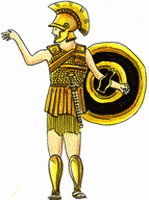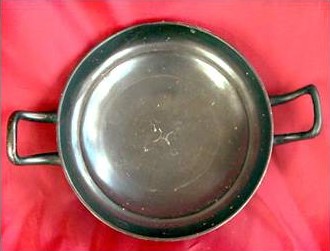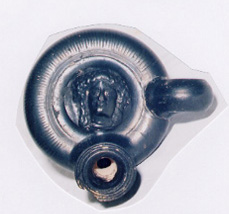Maps of the Antique
Mediterranean Sea
 Greece Greece
 Attic Attic
 Corinth Corinth
 Magna Graecia Magna Graecia
 Apulia Apulia
 Daunia Daunia
 Gnathia Gnathia
 Campania Campania
 Some dates Some dates
 Archaeological sites Archaeological sites
 Pottery and ceramics Pottery and ceramics

|
CAMPANIA: POTTERY AND CERAMICS

Kylix showing a stamped pattern.

Calene ware guttus
|
The most prolific artistic period starts towards 400 B.C., when Athens, which leaded the market of ceramics, declines after its defeat the Peloponnesian War. The craftsmen of Athens expatriate towards Italy and set up workshops. The shapes of the vases are inherited from the Athenian ceramics.
The campanian production offers mainly small pieces but also hydrias and bell-craters. the light-brown clay of Campania took a pinkish or red colour after firing.
The usual campanian potteries are often simple black glazed ceramics, reproducing the Greek traditional shapes, and thus without particular characteristic of style: one-handle amphora, kylix, lekythos, olpe, kantharos, skyphos… However, since no paint is used, the decorations consists often (in the kylix in particular) of a stamped pattern.
If the production remains of Greek inspiration, it also adapts to the Roman's wishes: the toroïdal guttus showing at its center a head of Medusa or Apollo, is a classical Calene ware. On the other hand, the Teano ware (found and undoubtedly produced in this city) present sometimes original shapes and are often painted with colors that may be very bright.
|
|

















